As October draws to a close, so does a memorable Northern Forest Canoe Trail thru-paddle for Dutch adventurers Zoë Agasi and Olivier Van Herck.
Zoë and Olivier hail from the Netherlands (although Olivier is originally from Belgium) and have been on a human-powered trip around the globe — 4,000 kilometers of cycling through southern Europe, sailing to South America, hiking in the Patagonias, and most recently, paddling the 740-mile canoe trail from Old Forge, New York, to Fort Kent, Maine.
We caught up with Zoë and Olivier this week as they settled down for some much-needed rest in Fort Kent.
Chris Morris: First, congrats on your thru-paddle. What are your overall impressions of the trip?
Olivier Van Herck: We never did a canoe trip before — we’d never even canoed before. This was one of the best things we did in the last three years of our world trip, from the first day to the last day. It was beautiful. When we arrived here in Fort Kent, we didn’t want to be finished.
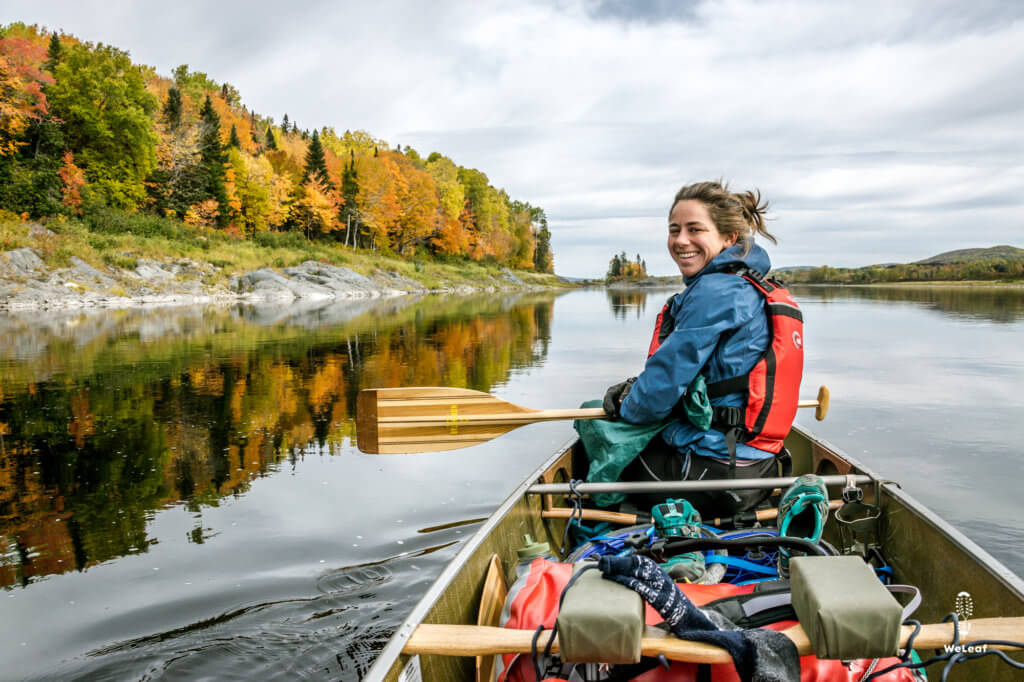
Zoë Agasi: This is the first time we did a trail with a beginning and an end. It was kind of sad to finish because we felt like we wanted to do more. It’s been a wonderful experience — at no single moment did I regret it. It brought us more views of different types of human-powered adventure. Being on the water ways was totally new to us and totally amazing.
Chris: The two of you are obviously well-seasoned travelers and adventurers. Still, every trip has its unexpected challenges — what were yours?
Olivier: We thought we’d get really sore in our muscles from the paddling, but that wasn’t the case — it was the portages that were tough. On Spencer Stream, there was very little water, and no easy way to portage. We tried to go through the woods, and ended up having to carry all of our gear first, then go back and get the canoe. We walked through the river on slippery stones — every mile took one to two hours. It was so challenging to walk with all of our gear on that part. It was mentally the toughest challenge of the whole trail.
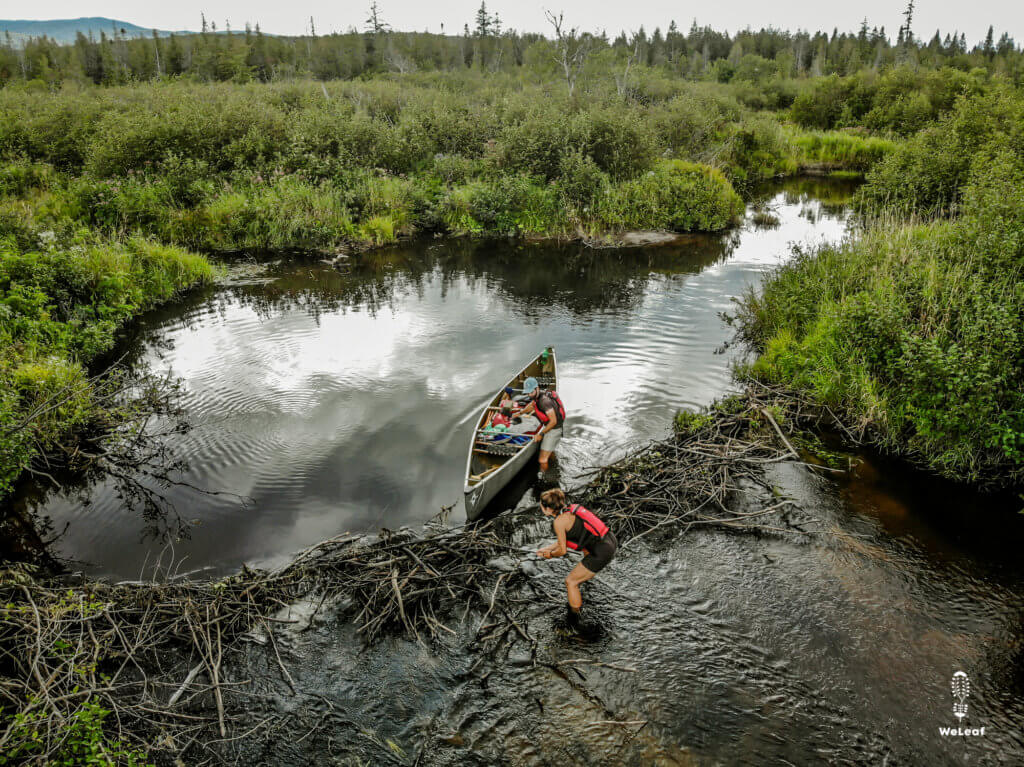
Zoë: We knew there would be tough parts, especially the portages. We really wanted to do the portages in one go, and we mostly managed to do that, but it wasn’t easy. It takes 100 percent effort to do it that way, and we were nearly dying on the end of them. Spencer Stream was unexpected. We knew there’d be little, but normally you can at least drag the canoe behind you — there was such little water that dragging wasn’t even possible. That made it extremely tough. It took us a full day to complete — it was one of the two moments that we were worried we wouldn’t find a place to sleep.
Chris: What was the other?
Zoë: The Clyde River. We knew we’d encounter some beaver dams, but we didn’t expect to find 15 dams the first day, and 17 the second day. We tried to calculate every day where we’d end up — this day, our calculations were completely wrong. Some of the dams are so high, you have to find spots where you can stand and get your canoe over. It was fun, but it was challenging to find a place to sleep in the end. That day it was so marshy we were worried we wouldn’t find ground to sleep on.
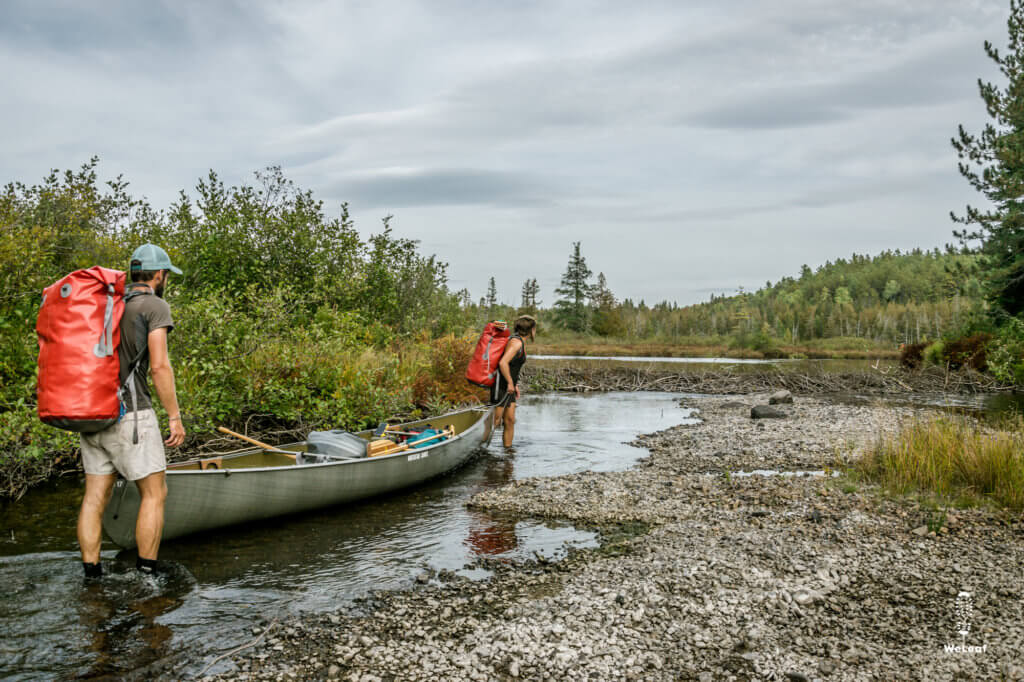
Olivier: It was almost dark and we finally came around the corner of the river, and we found a big yard — Zoe went to ask the landowner if we could pitch a tent and he said yes, and we had just enough time to pitch the tent and cook before dark.
Chris: That’s one of the things people love about the canoe trail — the people who help along the way. Did you have other interactions that stood out to you?
Zoë: We’re used to asking people for help because that’s how it’s worked the last few years. The scary moment from that day on the Clyde River was that we had to come up the backyard — when you’re on a bike you go to the front door. It was scary to come through the backyard — the man was a little confused because I had my red life jacket on — I might have looked like I was with the police. But he understood we were coming from the water.
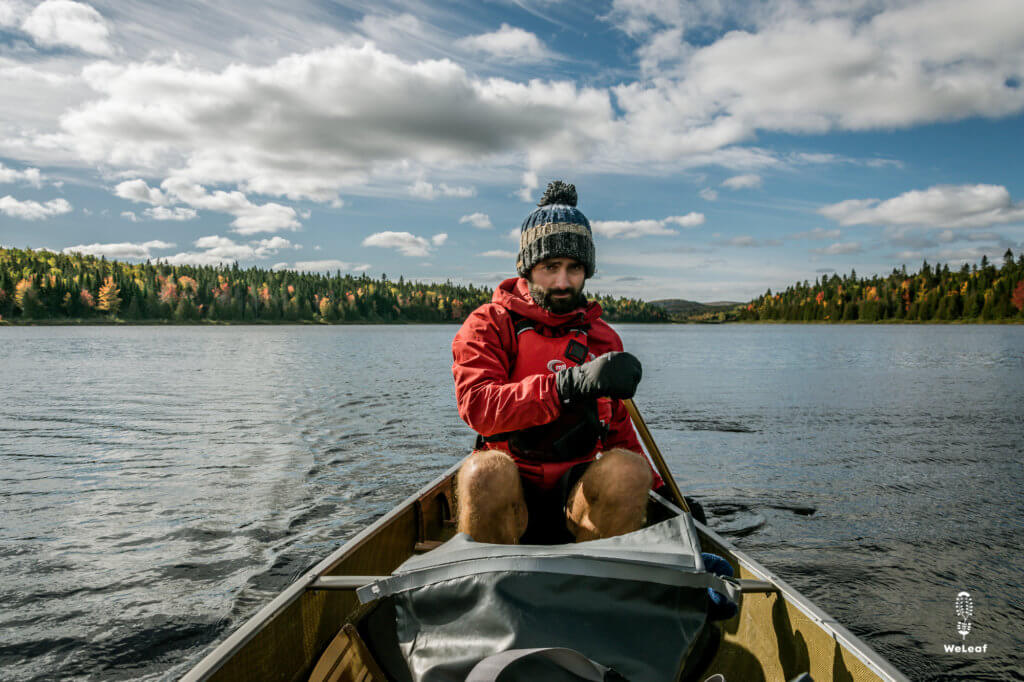
Olivier: Another time was when Zoe’s parents came to visit us. They didn’t paddle with us, but would meet up with us. One night, we were walking up the road with a canoe, and we came across a family with some dogs, and they let us put up our tent. That night, we had some beers with the father, and we asked what they were doing tomorrow, and he said, “Well, I’m going to make breakfast for our new international friends.” It was great to have people help us and find solutions to the challenges.
Zoë: That family’s mother sent out a message on Instagrams saying “please take care of these folks, they’re on the Northern Forest Canoe Trail.” That was great. We also had a lot of people who took photos and tracked our trip on social media. People were taking care of us online.
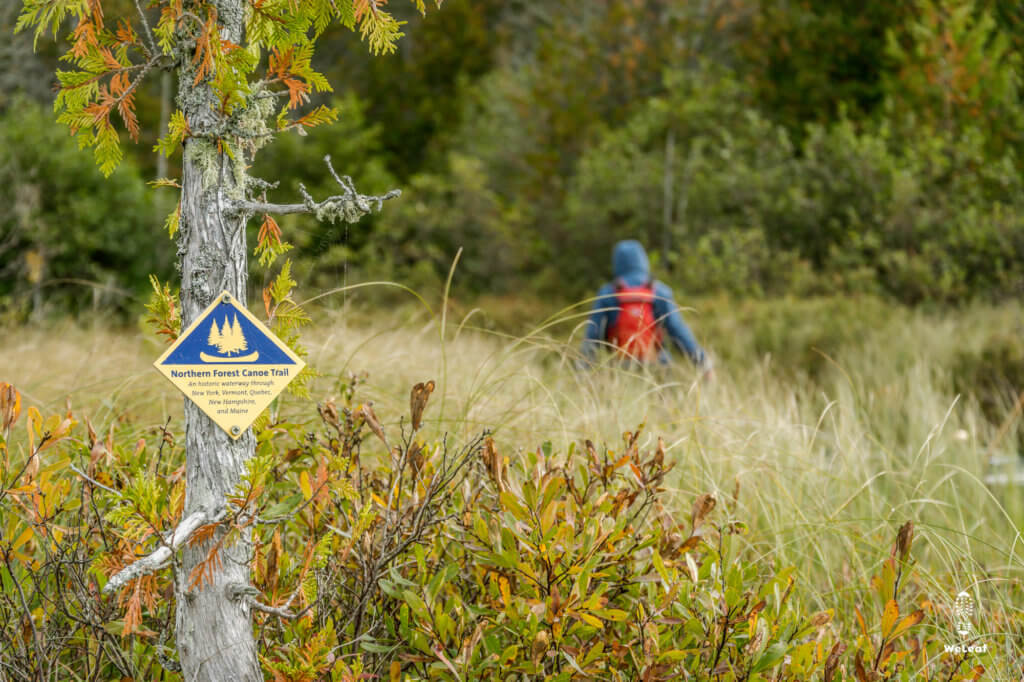
Chris: Now that you have time to reflect, do you have a favorite section of the trail?
Zoë: It’s hard to say. We have different opinions on it. What was your favorite Olivier?
Olivier: I would say starting in Maine when we arrived at the big lakes. It was extremely remote. The lakes didn’t have camps on them; you could feel the wilderness. The Allagash section was my favorite.
Zoë: I had one section in the Adirondacks that I loved — Brown’s Tract. I was blown away by how remote it felt and how beautiful it was to do all of the loops — the water was just perfect. I loved it. And we actually saw our first beaver dams there. Then, of course, we had some moments of seeing wildlife. We do have beavers in the Netherlands, but we don’t see them often. On the canoe trail we saw beavers and otters for the first time — the otters came up to the front of our boat to check us out. That was very special for us. Last of course were the moose — we waited 45 days to see a moose, and hoped to see one every day. On day 45 we saw eight of them. It was very, very special. The first one we saw, it was below 32 degrees and very early in the morning. We had to pee and had to go out of the tent, and Olivier suddenly said, “Shhh, I can hear something.” We heard footsteps in the water and came out of the tent silently, in our underwear, and it was raining. We saw two black shapes moving, but it was very dark. So we waited for two hours in the rain for enough light, and we saw two moose. Then that same day we saw a total of eight — that was a wonderful day.
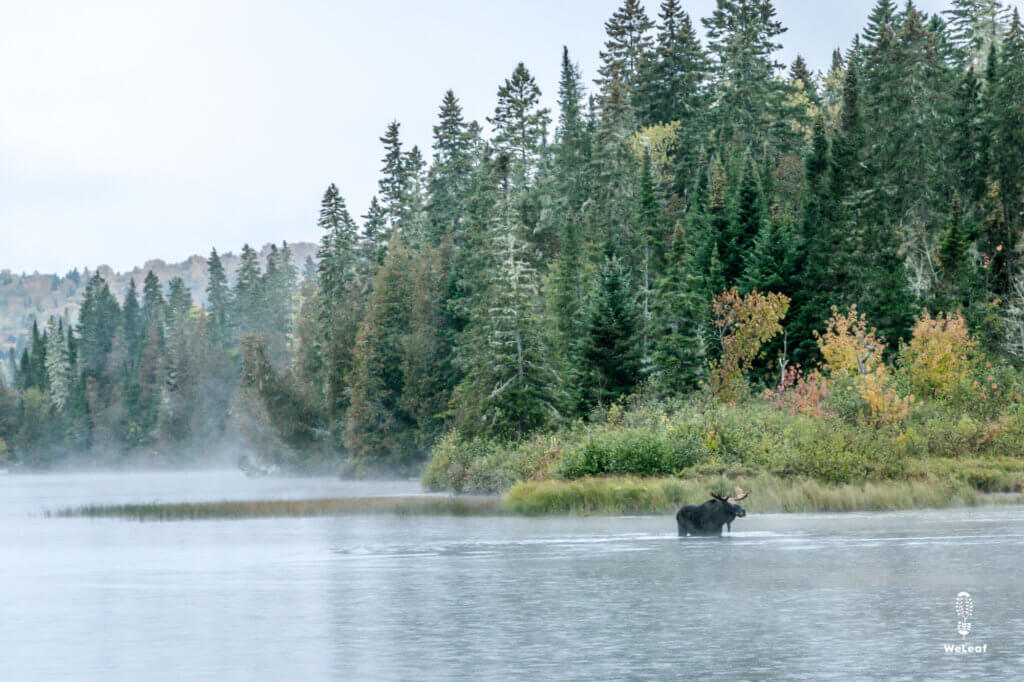
Chris: With 740 miles under your belt, do you have any tips for future thru-paddlers?
Olivier: Start in August. Many people told us it was too late in the season and the water would be very low. But we believe that starting in August was a beautiful choice — warm water, no bugs, beautiful fall, less traffic. For us, starting in August was the best time. I don’t think many people do it, but we liked it.
Zoë: What do you prefer, bugs soomzing around you every day, or walking a few extra miles to get around low water? I know what I prefer. I would also say to think about the canoe trail as a portaging trail, not just a canoe trail. If you’re prepared for that, you’ll make it to the end.
Chris: So you’re going to take a few days to rest up. What’s next?
Olivier: From here, Fort Kent, we’re going to ride our bikes to Quebec City. From there, we will ski 3,000 kilometers across Canada. After that, we will go back to Europe, rollerski through the north of Europe, then return home to the Netherlands. It will be another year before we’re back home.
To learn more about Zoë and Olivier’s adventures, check out their website: www.weleaf.nl. You can also follow them on Facebook, YouTube, and Instagram.
Check out their blog post: 6 Reasons to Start the Northern Forest Canoe Trail in August.